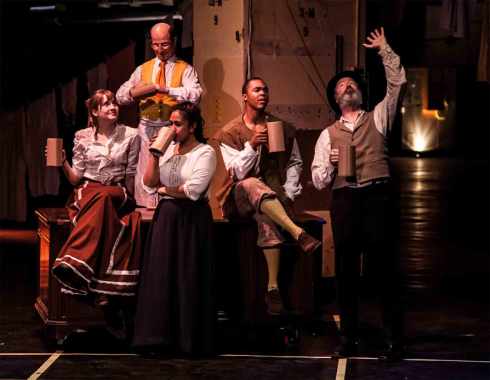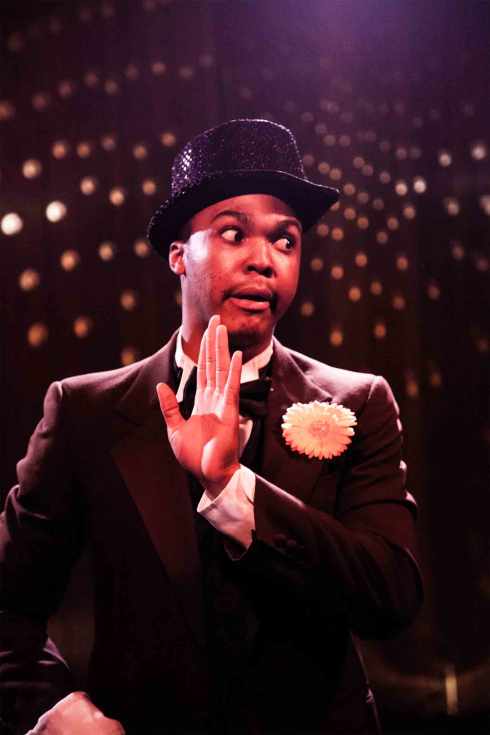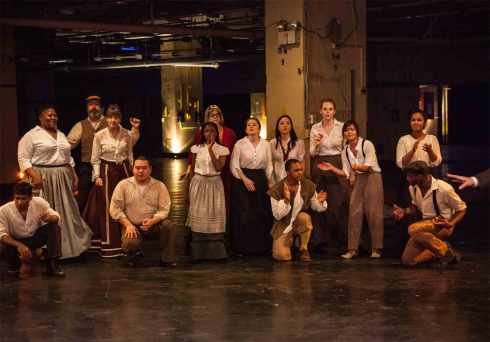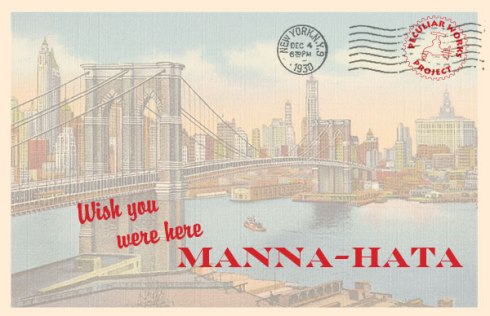Playwright Barry Rowell said he wanted his new play, Manna-Hata, to be an experience and not a story. Well, set to a walking tour of the historic James A. Farley Post Office on 8th Avenue, an experience it certainly was.
The show, which tells the extraordinary true story of the beginnings of our beloved New York City, shares tales featuring famous legends such as Walk Whitman, Dorothy Parker, Peter Stuyvesant and Emily Roebling. The show paints the picture of New York City, a once small island, turning into the booming metropolis that it is today. Produced by the Peculiar Works Project, a company that puts on productions at site-specific locations, different scenes were acted out in different rooms of the post office. Audience members followed their tour guide and actor in the play as it would soon unfold, to various locations within the building. Viewers stood for some scenes and sat for others, depending upon the set up of the room.
But as long as you don’t mind being on your feet, you don’t have to fret about seeing the performance; unlike traditional live theater, there is no bad seat in the house. In fact, audience members line a long hallway through which four cast members begin the show with an upbeat, grab-you-right-away introduction to the play. Note: if you prefer to sit in the back and take a casual nap during most live performances, this is probably not the go-to night out for you!

A much added bonus is the peak inside the James A. Farley Post Office. Listed on the National Register of Historic Places and first opened in 1914, the antique details and creaky floorboards offer the perfect setting for sightseeing and ideal backdrop for a story on Manhattan’s beginnings. Plus, the simplistic sceneries made by the actors during the scene for which it is needed are remarkably engaging, specifically noted in the rising of the Brooklyn Bridge through ropes, twinkling lights, and suspended lines being pulled by the performers.
However, this unique take on live theater is best described as scenes of brilliance peppered with moments of confusion. In its best occasions, it tells locals and visitors alike where the magic of the city all began.
Take the ensemble describing the day they first arrived to New York, such as “June 12, 1665: fell asleep in New Amsterdam, woke up in New York” or “November 12, 1954: last ship through Ellis.” And discussing their first apartment; “A three-month sublet with friends of a friend of an ex,” “separate kitchens” and “natural light” reminds all New Yorkers when and where they first fell in love with the city. Likewise, scenes of Boss Tweed on trial and the labor organizers at Triangle Shirtwaist Factory appeal to all audiences just as a live performance of a historical-fiction novel would.

Unfortunately these great insights, which produce narrative dialogue that so clearly emulates the mood and realities of that time in New York, were often book-ended with confusing scenes. Clearly meant to exude the social times of that era, they lacked cohesiveness or explanation among the more straightforward depictions. If only the audience were holding the very timeline the writer was following during the creation of his script, these scenes would have been brilliantly appropriate. Sadly, without that itinerary, audience members were occasionally left with pursed eyebrows and tilted heads, as the uncertainty of which specific social or political piece of New York history being touched on was pondered.
Despite the confusion, the dialogue was wonderfully written and it was a shame that the performance did not solely follow the mood of historical fiction or a play noting the social instances of the time. It seems that the effort to portray both fell short in bringing either storyline to its full potential. In what was already a 2 hour and 45 minute long performance, you can’t help but wonder why a different editing process wasn’t implemented to bring the brilliance of the script out and cease the unnecessary.
Still, the actors were truly engaging and even when the dialogue emitted that confusing feeling, the mood of the city was always felt through their portrayals. The flamboyant characters representing big business and money through New York’s history are funny, engaged and often earned laughs from the audience. Their style is perfectly played against the ensemble, who proves that hard work and dreams have been the make up of the city’s majority since the beginning. This back and forth between the two ideals allows for a great insight into the most fundamental definition of what Manhattan truly is; it’s people.

So in short, is this play worth the $18 dollars tickets cost? Having hopeful dreams that this play was edited after previews, and the obvious potential for the writer’s unique vision, it’s certainly recommended for a fresh take on Manhattan’s traditional theater district. Plus, they serve free beer, soft beverages and snacks during intermission. And you can’t beat free beer in Midtown.
Manna-Hata officially opened on Monday, June 10th and will hold performances at the James A. Farley Post Office from Thursday-Sunday at 7pm until June 23rd. Order your tickets today here or by calling 866-811-4111.









